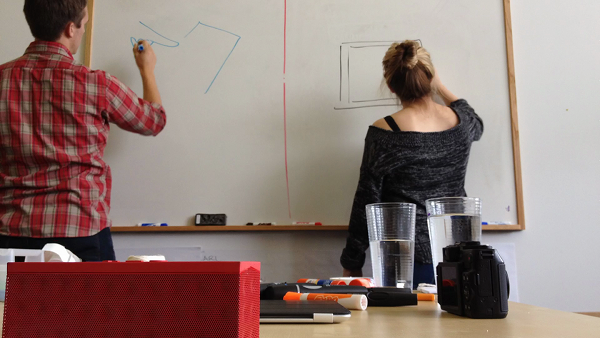
We’re UX designers first and foremost. And all UX designers think they can build something better. We were also all freelancers at some point. Part of our goal in coming together to form Fuzzy Math was that we would use consulting to fund internal app development. It’s a successful model used by a lot of small firms.
As with many startups, we’ve tried something like this and failed before. The first project we all worked on prior to Fuzzy Math was a UI wireframing tool, similar in nature to Balsamiq Mockups, that we failed to execute for a number of reasons. But it was the first time Ben, Jason, and Mark worked together.
We just finished a series of long-term gigs for the likes of Microsoft and others. We’ve been planning on working on our first internal project for a while. Headed by Mark, this project consists of developing a product for resource management. The desire to create such a product came from Fuzzy Math’s own need for better resource and project planning. So we will be forced to eat our own dog food on this one, to see if we can in fact build something more useful and easier to use for resourcing.
What we know is that a lot more people are freelancing these days and a lot more people are working remotely. Small companies are now operating with this model — not only working remotely, but using a large network of vendors, contractors and freelancers. Managing this large network, gauging availability, resourcing existing projects, and making projections about resources is very difficult. Our new app, codenamed Ranger, aims to ease this pain.
So why are we blogging about this? We want to share our process, how we go about designing apps and sharing challenges that surface during development. In the next post we’ll be talking about some of the existing tools, what they do, what they don’t do, where they succeed and where they fail.